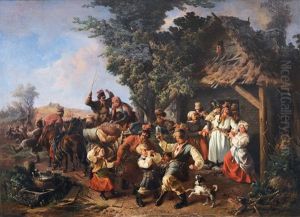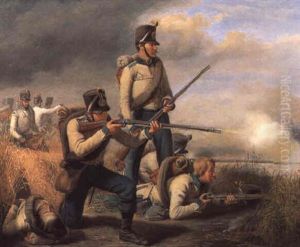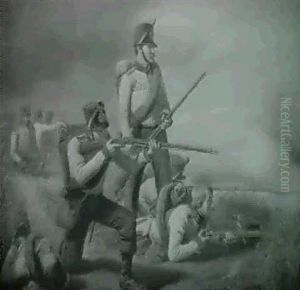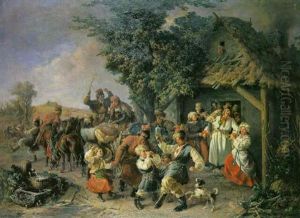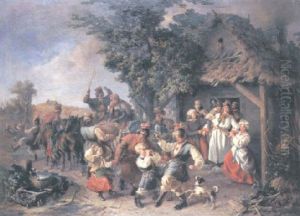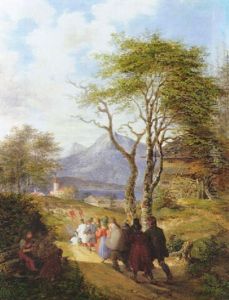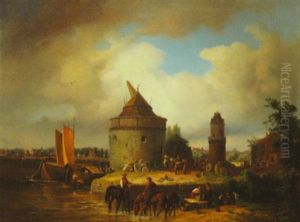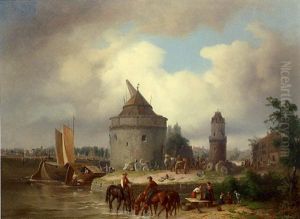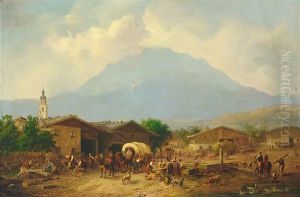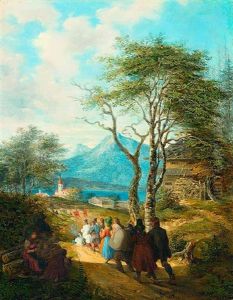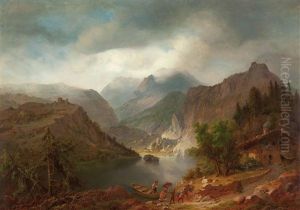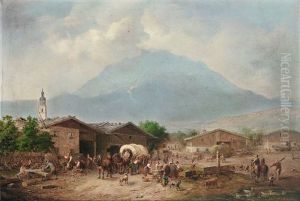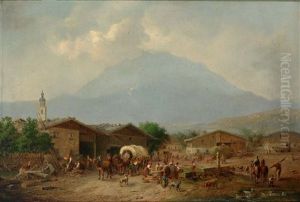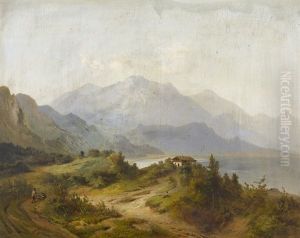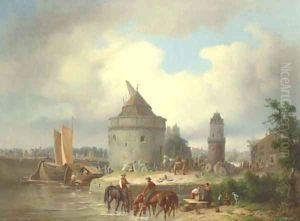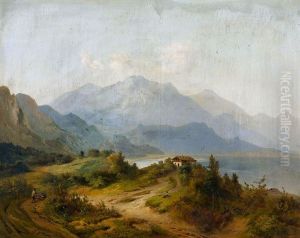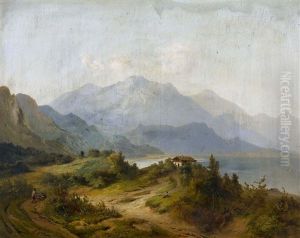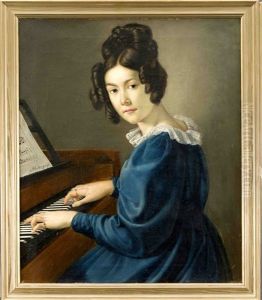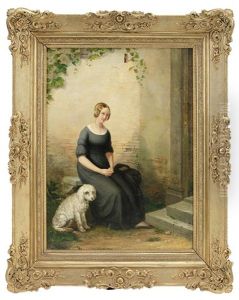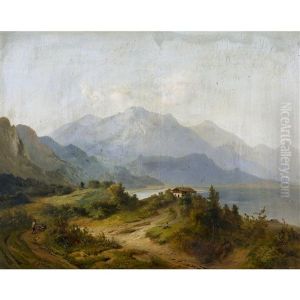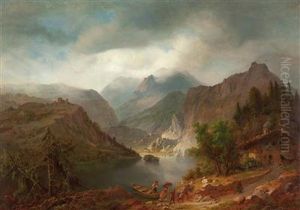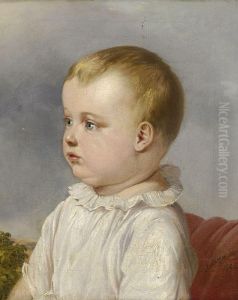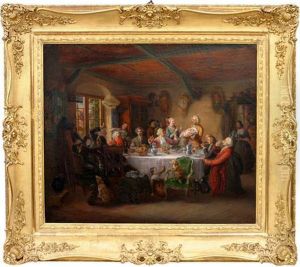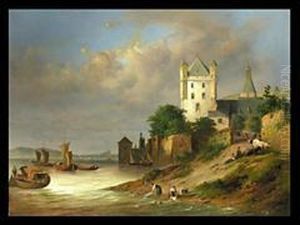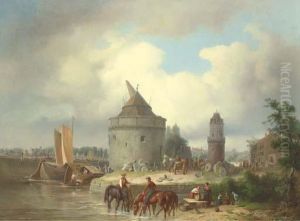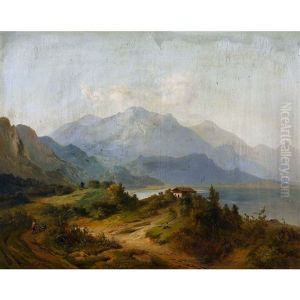Karl August Aerttinger Paintings
Karl August Aerttinger was a German artist known for his contributions to the Biedermeier period, a term that describes the style of unpretentious and modest art, literature, and design in Central Europe between 1815 and 1848. Born in 1803, Aerttinger's work primarily focused on genre scenes, landscapes, and portraits, embodying the Biedermeier emphasis on simplicity and the depiction of everyday life. His paintings are characterized by their detailed realism, warm colors, and the ability to capture the nuances of human expressions and the tranquility of nature.
Throughout his career, Aerttinger remained somewhat of an enigmatic figure, with limited personal details available, yet his art provides significant insight into the cultural and social dynamics of his time. He was adept at using light and shadow to add depth and emotion to his works, making his pieces resonate with viewers on a personal level. Aerttinger's landscapes, often inspired by the German countryside, are notable for their serene beauty and meticulous attention to detail, reflecting a romantic yet realistic appreciation for nature.
Despite not being as widely recognized as some of his contemporaries, Aerttinger's contributions to the art world during the Biedermeier period were significant. His ability to convey the simplicity and beauty of everyday life, along with his technical skill, has earned him a place among the notable artists of the 19th century. Karl August Aerttinger passed away in 1876, leaving behind a legacy that continues to be appreciated by art historians and collectors who value the intimacy and authenticity of Biedermeier art.
